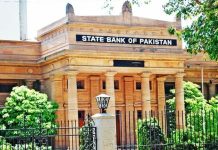ISLAMABAD: Pakistan needs to improve electricity tariff structures in order to make the industrial sector more competitive, and to stem the ballooning circular debt.
During the last four to five years, the electricity prices in Pakistan have increased by more than 50%. Pakistan is included in those countries where the electricity prices are too high.
According to Afia Malik, expert on energy issues and senior research economist at Pakistan Institute of Development Economics (PIDE), the International Monetary Fund (IMF) is currently asking the Pakistan government to reduce subsidies by increasing electricity prices. She said rising electricity prices are increasing the burden on the government and ultimately on consumers.
This hefty burden can be attributed in large part to high fuel prices in the international market as well as the design of the tariffs for consumers, and the mechanism through which these tariffs are made.
Afia Malik pointed towards “discriminatory” tariff structure among different sectors in Pakistan, and stated that there was a difference in charges of household and industrial sectors.
There are six different slabs in the household sector which are categorized according to the number of units consumed.
“There are very few examples in the world where there are so many consumer slabs. There are some lower slabs that are paying less than the actual cost of electricity. As a result, the cost is recovered from the people who come under upper slabs,” she said.
According to Mansoor Ahmed, an energy expert at the Karachi Chamber of Commerce, the vicious cycle of circular debt is also a pressing issue which needs attention. The Pakistan government was unable to break out of this cycle.
“According to an estimate, when we increase the price of electricity by Re1 per unit, the circular debt increases by Rs10 billion. The reason for this is that the surge in the electricity prices has increased power theft, and consumers’ purchasing power has decreased, affecting their ability to pay bills,” he pointed out.
After surge in electricity prices, the upper class of the country decided to switch to solar energy. Circular debt also increases in part due to switching of high-slab consumers to solar energy sources.
Mansoor said some consumers install more than one meter of electricity to stay in the lower slabs so that they can get cheaper electricity rates. It means that in spite of the fact that some consumers can afford to pay for expensive electricity, they still receive subsidies.
There are different countries around the world that are applying flat or linear tariffs. Turkey is a country where all sectors are governed by the same flat rate of tax.
The government should change the tariff mechanism and go towards flat tariffs. By doing this, people will become more inclined to pay their electricity bills, resulting in an increase in tax revenues and a reduction in inefficiency.
-INP






